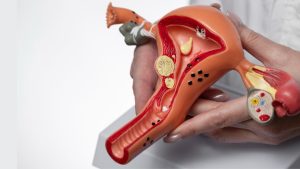Azoospermia: Why Stem Cell Therapy Remains in Research
UPDATED ON 06th OCT. 2023
AUTHOR
Dr Jay Mehta
Scientific Director & IVF Specialist with 10+ years of experience
TREATMENT
Stem Cell Therapy
CONDITION
GET IN TOUCH ON
Dr. Jay Mehta is an endometriosis and infertility specialist in Mumbai, India. With his help, you will learn about non-obstructive azoospermia (NOA) and its possible treatment options.
Stem cell therapy has emerged as a promising frontier in medical science, particularly for challenging reproductive health issues. This advanced treatment is primarily concentrated on the reproductive organs, namely the endometrium, ovaries, and testes.
Given the intricacy of these organs and their pivotal role in reproduction, the increasing application of stem cell therapy signifies its potential efficacy.
As with any medical procedure, thorough consultation with healthcare professionals is crucial to ascertain its appropriateness for individual cases.
Stem Cell Therapy: A Ray of Hope for Azoospermia?
Men’s reproductive health is a deeply personal and sometimes complex journey. Among the challenges some men face is a condition known as Azoospermia.
Imagine this: you’re expecting to see countless little swimmers under the microscope, but there’s not a single sperm to be found in the semen sample. It can be disheartening, to say the least.
Enter the potential of stem cell therapy—a medical frontier that has been making waves across various areas of health, from restoring damaged tissues to possibly repairing organs.
When it comes to addressing Azoospermia, researchers are delving deep into the possibilities of stem cells. While still in its investigative phase, early indications suggest that a unique procedure called mesenchymal culture might hold the key to unlocking new treatments for non-obstructive azoospermia.
It’s a glimmer of hope for many and a testament to science’s relentless quest for answers. However, it’s equally important to tread with caution and knowledge.
If the root cause of azoospermia is woven into a man’s genetic code, stem cell therapy might not be the silver bullet. Every person’s story and medical history are unique, and it’s crucial to make informed decisions under the guidance of experts.
The Stem Cell Therapy Procedure Explained

A significant part of the promise that stem cell therapy holds lies in its meticulous procedure. The process commences with the extraction of approximately 40 to 50 cc of bone marrow from the patient.
Although this might seem like a considerable amount, it’s worth noting that a mere 0.8 ml of this is specifically prepared for the therapy. This precision reflects the high concentration of stem cells required for effective treatment. Once the aliquot, or portioned amount, is ready, it is meticulously injected into the designated area.
This procedure is done with the utmost care, ensuring that the introduced cells are optimally positioned to kickstart their regeneration journey, replacing damaged cells, and rejuvenating the tissue.
Stem Cell Therapy and the Endometrium: A Ray of Hope
The endometrium, the inner lining of the uterus, plays a pivotal role in women’s reproductive health. For those afflicted with conditions such as Asherman syndrome or characterized by a thin endometrium, the conventional treatments can often fall short.
Enter stem cell therapy. This groundbreaking procedure has demonstrated potential, showing up to a 50% improvement in certain cases. One of the remarkable attributes of the endometrium is its inherent ability to regenerate.
Stem cell therapy taps into and augments this natural capability, paving the way for enhanced healing and recovery. However, it’s crucial to mention that not all scenarios guarantee success.
Specifically, in situations where a patient has endometrial TB, the efficacy of stem cell therapy may be compromised. As always, understanding the nuances and consulting with specialists is essential before embarking on this therapeutic journey.
Stem Cell Therapy vs. PRP Treatment: A Comprehensive Comparison
In the ever-evolving realm of regenerative medicine, two treatments have been in the spotlight: stem cell therapy and PRP (Platelet-Rich Plasma). Both therapies are rooted in the concept of harnessing the body’s innate capacity to heal.
However, when juxtaposed, stem cell therapy often emerges as the more formidable contender, particularly when addressing ailments such as chronic tendon endometrium or Asher syndrome.
PRP, though a popular choice among many, doesn’t always live up to its high expectations. Its efficacy, particularly in severe cases, can be somewhat underwhelming, with success rates sometimes plummeting to a mere 10%.

4,790+
379K+
The Ovarian Paradigm: Evaluating Stem Cell Therapy

The world of ovarian treatments has been abuzz with the introduction of PRP. This rise can be attributed to the frequency of cell cycles undertaken in treatments.
But here’s the crux: PRP, in essence, relies on platelets which, unfortunately, offer only a limited reservoir of growth factors. Delving into the data, the success rates of PRP for ovarian treatments hover between 15% to 20%. Now, consider specific metrics.
For individuals with an AMH level of 0.1, FSH levels exceeding 13 to 14, and an antral follicle count between 1 and 2, stem cell therapy emerges as a potential beacon of hope. However, it’s crucial to temper expectations for those with antral follicle counts of 3, 4, or 5. Age, as with many medical procedures, is a determining factor. Women below the age of 38 are posited to reap greater benefits from stem cell therapy targeting the ovaries.
Conclusion
Stem cell therapy is a rapidly evolving field with immense potential, especially in reproductive medicine. However, like all treatments, its effectiveness varies based on the condition and individual factors.
Always consult with a medical professional before making decisions related to stem cell therapy. In case if you have further queries, feel free to reach out. Our experts will definitely will assist you.
Read More Related Information:
1. Problems Faced After Stem Cell Therapy?
2. Does Masturbation cause Azoospermia?
3. Can I get Pregnant Naturally if my Husband has Azoospermia?
AUTHOR
Dr Jay Mehta
Scientific Director & IVF Specialist with 10+ years of experience
TREATMENT
Stem Cell Therapy
CONDITION
CALL US 24/7 FOR ANY HELP
GET IN TOUCH ON
Share Article on
Recommended Reading
Does Azoospermia Surgery Affect Sex Life?
Will azoospermia surgery change your sex life? In most cases, no. Understand the benefits of the procedure and how it can help restore fertility
Causes and Treatment of Non-Obstructive Azoospermia
Nonobstructive Azoospermia means no sperm in the ejaculate. It can be caused by genetics, hormones, testicular failure, or ejaculation issues
What is the procedure of MICRO TESE & how it works?
MicroTESE is a sperm retrieval surgery for men with Non-Obstructive Azoospermia, increasing their chances of conception through IVF or ICSI




